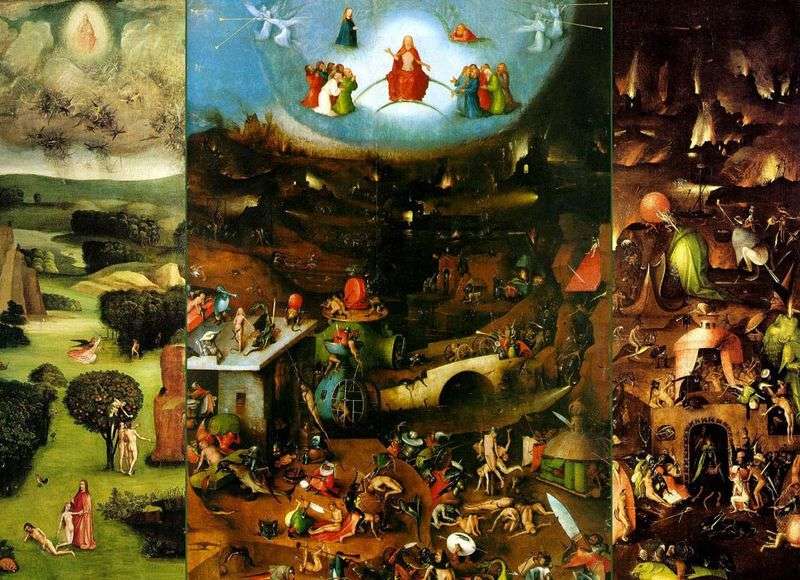
“The Last Judgment” by Bosch is one of his most impressive works, and one of the most impressive works on this subject in general. It was commissioned by the governor of the Netherlands and is the largest of the surviving works of the Artist.
The plot of the triptych is intuitive to anyone who is familiar with Christian traditions to some extent. The left wing shows Paradise – it tells the very beginning of the biblical story. Here is the Lord who creates Eve from the rib of the sleeping Adam. Here Adam together with Eve try forbidden apples from the tree of knowledge of good and evil. Here a radiant archangel with a sword in his hand expels them from the Garden of Eden. In the clouds above them angels fight with fallen angels, dropping those down. And above them is Christ in the glory of glory and power.
The middle leaf represents the Last Judgment. Above is the court, the trumpets of the last hour are trumpeting, the angels are crowding at the Savior’s throne, and the righteous stand at his feet, preparing to ascend into paradise – it is noteworthy that in comparison with sinners there are very few of them, which can express the pessimism of the artist who believes that the righteous on earth not so much. And under them, hell begins. Mill mills are spinning, sinners are tormented by devils, sinners are hurting other sinners, and although this is only a picture of the court, it is already very similar to hell.
The last leaf is actually hell, and it casts exceptionally unpleasant thoughts about the finitude of life and that if hell really is, then it’s better not to sin. Fantasy Bosch manifests itself in all its glory – sinners are tortured, pierced with arrows and blades, burned, cooked alive, torn to pieces, suspended like pork carcasses on hooks. As far as the paradise is, heaven is as alive and graphic as hell, as if he is much closer to the artist.
If the artist and set himself some goal, then this goal – to ward off sinners from hell in the simplest way. Having frightened them.
 Hell. The right shutter of the altar The Last Judgment by Hieronymus Bosch
Hell. The right shutter of the altar The Last Judgment by Hieronymus Bosch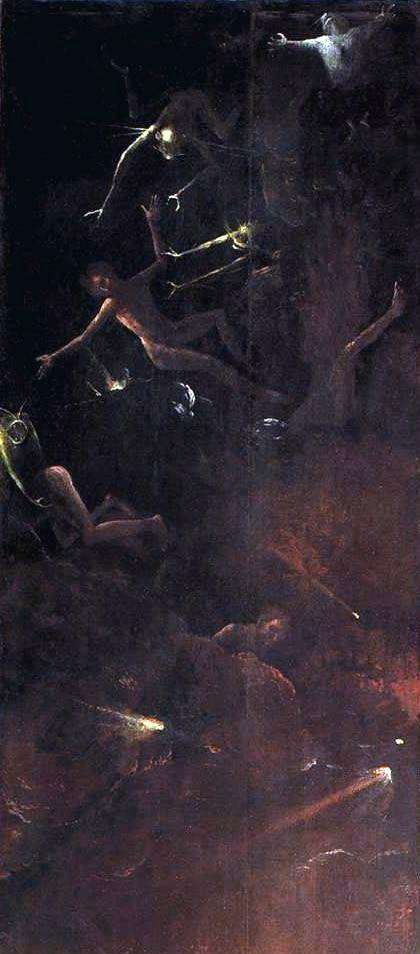 The overthrow of sinners, Visions of the Hereafter by Hieronymus Bosch
The overthrow of sinners, Visions of the Hereafter by Hieronymus Bosch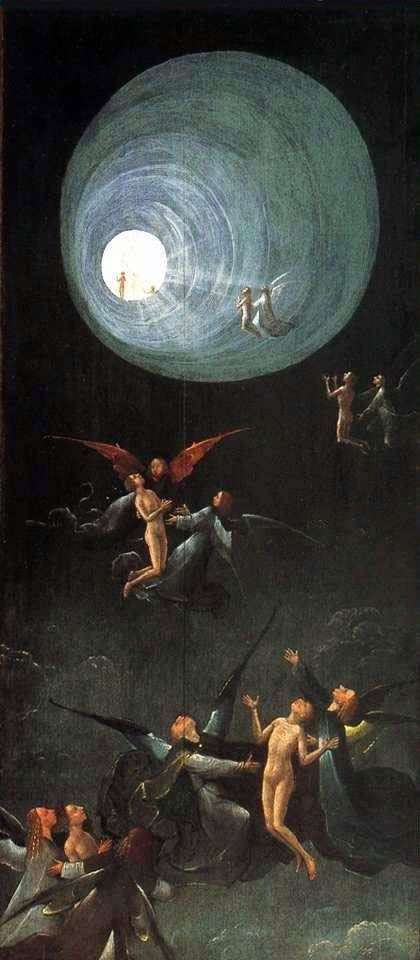 Ascension in the Empire, Visions of the Hereafter. Part of the altar by Hieronymus Bosch
Ascension in the Empire, Visions of the Hereafter. Part of the altar by Hieronymus Bosch The Last Judgment by Angelico Fra
The Last Judgment by Angelico Fra Hell, the altar of Voznesen. The right shutter by Hieronymus Bosch
Hell, the altar of Voznesen. The right shutter by Hieronymus Bosch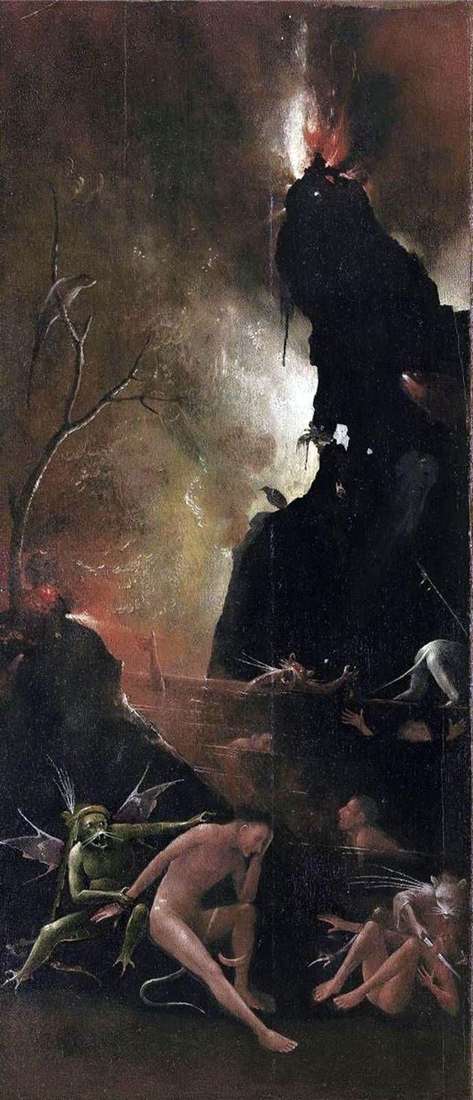 Hell’s River, Visions of the Hereafter by Hieronymus Bosch
Hell’s River, Visions of the Hereafter by Hieronymus Bosch The Last Judgment by Fra Beato Angelico
The Last Judgment by Fra Beato Angelico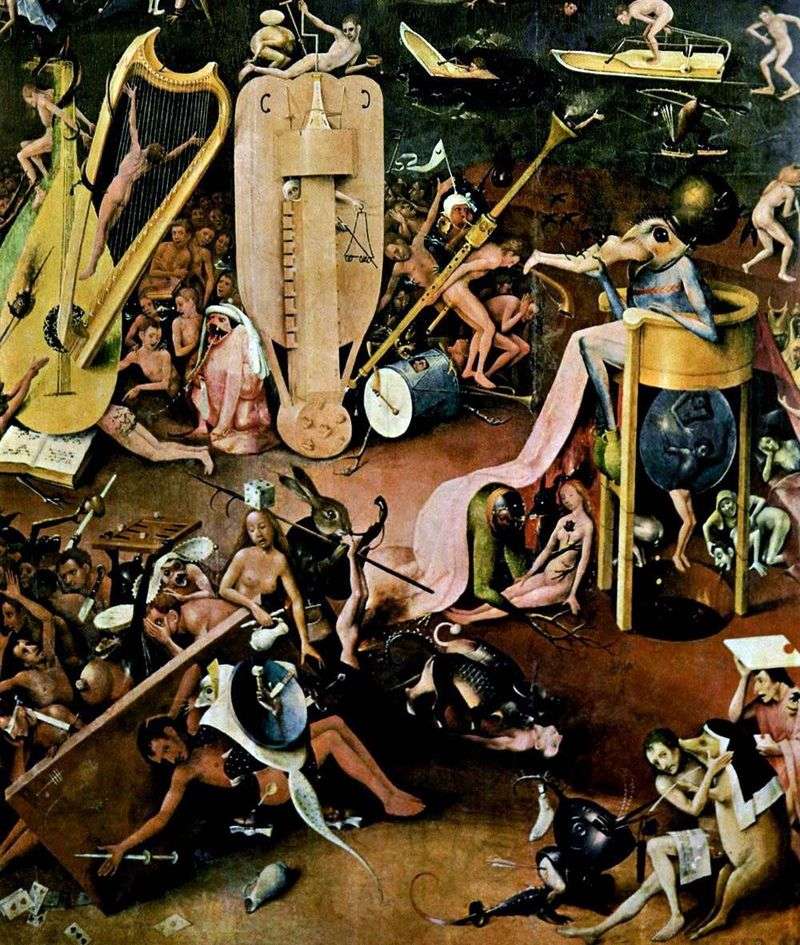 Hell. Detail of the triptych Garden of earthly pleasures by Hieronymus Bosch
Hell. Detail of the triptych Garden of earthly pleasures by Hieronymus Bosch